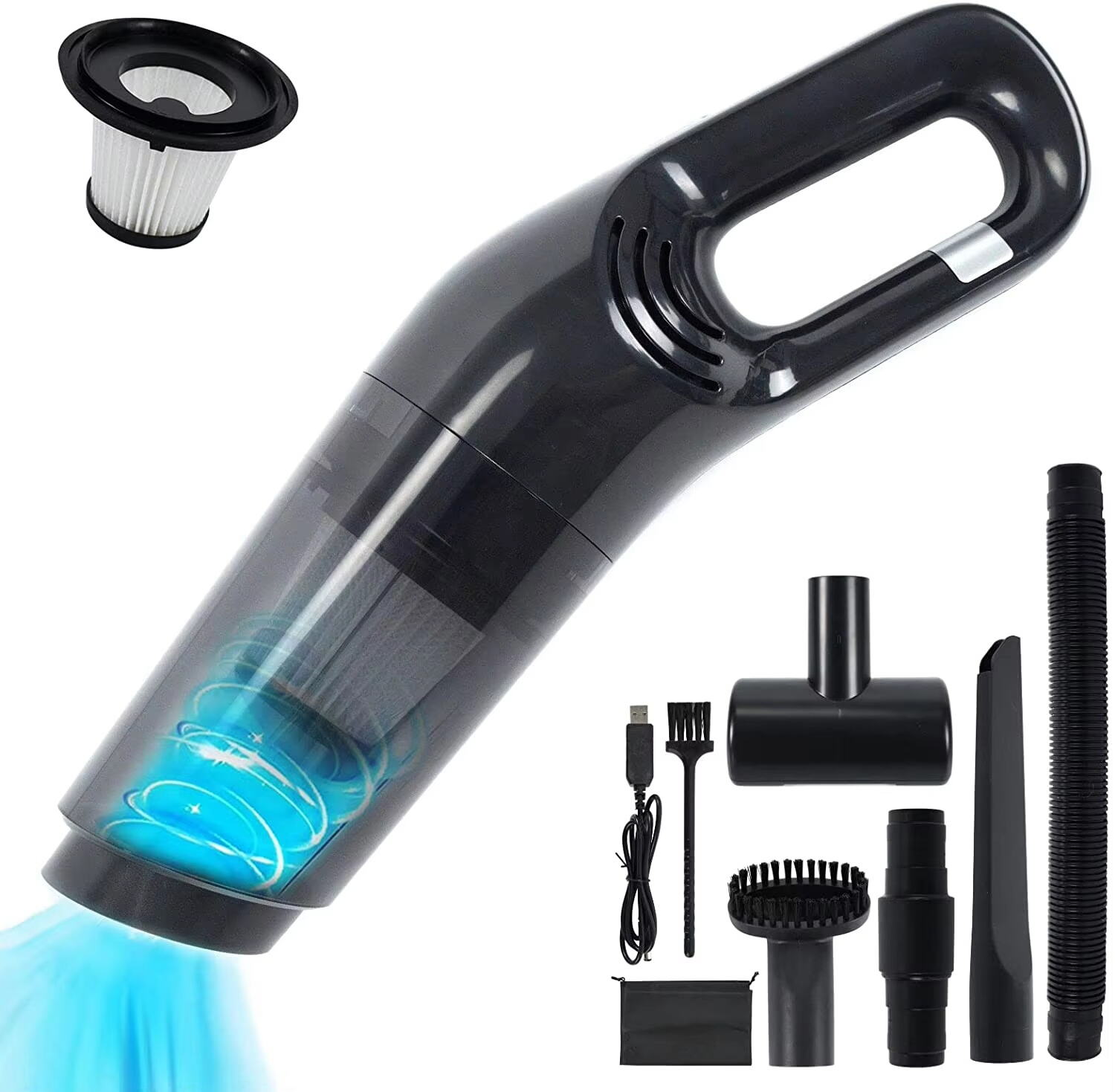The Evolution of Automotive Cleaning Technology
The landscape of car interior maintenance has transformed dramatically, with car vacuum cleaners becoming increasingly sophisticated and essential for modern vehicle care. Today's automotive cleaning solutions combine powerful suction capabilities with cord-free convenience, making it easier than ever to maintain a pristine vehicle interior. As we approach 2025, manufacturers have introduced groundbreaking features that set new standards for portable car cleaning technology.
The latest car vacuum cleaner models incorporate advanced filtration systems, extended battery life, and ergonomic designs that revolutionize how we approach vehicle maintenance. These innovations address long-standing challenges of automotive cleaning, from reaching tight corners to managing different types of debris. Understanding these advancements is crucial for making an informed decision about which device best suits your specific needs.
Key Features of Modern Car Vacuum Cleaners
Battery Technology and Runtime Performance
Modern car vacuum cleaner units leverage lithium-ion battery technology, offering unprecedented power efficiency and longer operating times. The best models now provide up to 45 minutes of continuous cleaning on a single charge, with quick-charging capabilities that can restore full power in as little as two hours. This extended runtime ensures complete interior cleaning without interruption, even for larger vehicles.
Smart battery management systems prevent overheating and optimize power consumption, while battery life indicators help users plan their cleaning sessions effectively. Some premium models even feature removable batteries, allowing for continuous operation with a backup power source.
Suction Power and Motor Innovation
The heart of any car vacuum cleaner lies in its motor and suction capabilities. Latest models utilize brushless DC motors that deliver superior performance while consuming less energy. These advanced motors can generate suction power exceeding 20 kPa, effectively removing embedded dirt, pet hair, and fine particles from various surfaces.
Variable speed settings allow users to adjust suction power based on the cleaning task, preserving battery life while ensuring optimal performance. The most advanced models incorporate smart sensors that automatically adjust suction power based on debris type and surface material.
Design Elements and Ergonomic Considerations
Attachment Versatility and Storage Solutions
Modern car vacuum cleaner designs prioritize versatility through comprehensive attachment sets. Standard packages include crevice tools for tight spaces, brush attachments for upholstery, and extension wands for improved reach. Premium models feature quick-release mechanisms for effortless attachment swaps and integrated storage solutions that keep accessories organized and readily accessible.
Manufacturers have also introduced innovative storage solutions, with wall-mounting options and compact charging stations that maximize space efficiency in garages and workshops. These thoughtful design elements enhance the overall user experience and encourage regular vehicle maintenance.
Weight Distribution and Handling
Ergonomic considerations play a crucial role in modern car vacuum cleaner design. Leading models maintain a weight under 3 pounds while ensuring optimal balance for reduced user fatigue during extended cleaning sessions. Soft-grip handles and intuitive control placements allow for comfortable operation from various angles.
The integration of swivel heads and flexible hoses further improves maneuverability, enabling users to clean difficult-to-reach areas without awkward positioning. These ergonomic improvements make regular vehicle maintenance more accessible and less physically demanding.
Filtration and Maintenance Features
Advanced Filtration Systems
High-efficiency filtration has become a standard feature in premium car vacuum cleaner models. Multi-stage filtration systems, including HEPA filters, capture particles as small as 0.3 microns, ensuring clean exhaust air and improved indoor air quality. These advanced systems prove particularly beneficial for allergy sufferers and households with pets.
Washable filters and easy-to-empty dust bins reduce ongoing maintenance costs while promoting environmental sustainability. Some models feature transparent collection chambers that allow users to monitor debris accumulation and filter condition during operation.
Maintenance Requirements and Longevity
Modern car vacuum cleaners are designed for minimal maintenance and maximum durability. Self-cleaning brush rolls and tangle-free suction systems reduce the frequency of manual cleaning interventions. Robust construction materials and quality components ensure reliable performance over extended periods.
Manufacturers now offer comprehensive warranty coverage, often extending to three years or more, demonstrating confidence in product durability. Regular maintenance requirements typically involve simple tasks such as filter cleaning and dust bin emptying, making these devices practical for daily use.

Smart Features and Connectivity
Digital Controls and Display Systems
Leading car vacuum cleaner models incorporate digital displays that provide real-time information about battery status, suction power levels, and maintenance requirements. Touch-sensitive controls offer intuitive operation, while LED indicators provide clear visual feedback during use. These smart features enhance user experience and help optimize cleaning efficiency.
Some advanced models include memory functions that remember preferred settings and provide usage statistics through companion mobile apps. This data helps users track cleaning patterns and schedule maintenance activities effectively.
Connected Features and App Integration
The integration of Bluetooth and WiFi connectivity enables enhanced functionality through smartphone applications. Users can monitor battery life, receive maintenance alerts, and access cleaning tutorials directly through their mobile devices. Some models even offer voice control compatibility with popular smart home systems.
These connected features represent the future of automotive cleaning technology, providing unprecedented control and convenience. The ability to track cleaning history and receive automated maintenance reminders helps ensure optimal performance and longevity.
Frequently Asked Questions
How long should a car vacuum cleaner battery last?
A quality car vacuum cleaner battery should provide 30-45 minutes of continuous operation on a single charge. With proper care and regular use, the battery itself should maintain optimal performance for 2-3 years before any noticeable decline in runtime.
What makes a car vacuum cleaner different from regular vacuum cleaners?
Car vacuum cleaners are specifically designed with compact dimensions, specialized attachments for vehicle interiors, and portable power sources. They typically offer stronger suction in a smaller package and include features optimized for automotive surfaces and tight spaces.
How often should filters be cleaned or replaced?
For optimal performance, washable filters should be cleaned every 4-6 weeks with regular use. HEPA filters typically require replacement every 6-12 months, depending on usage frequency and environmental conditions. Always consult your specific model's maintenance guidelines for best results.
